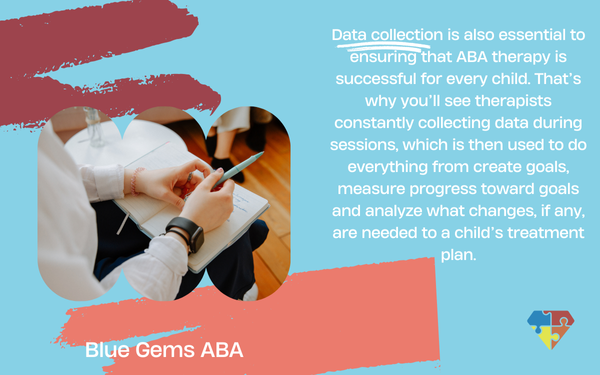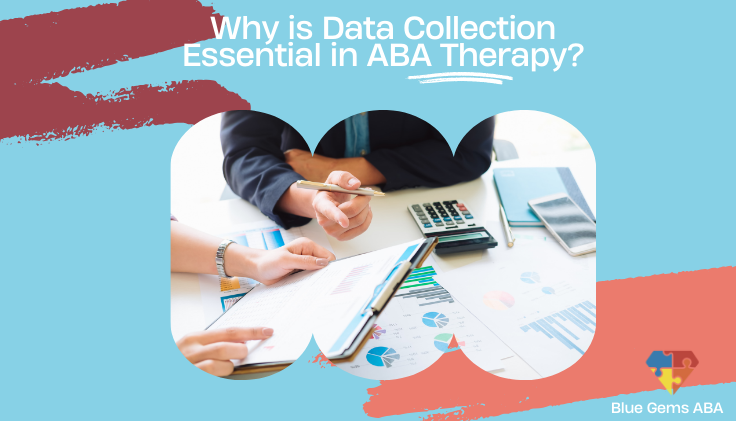Why is Data Collection Essential in ABA Therapy?
Data is a central part of applied behavior analysis (ABA therapy). As a science-based approach to learning and behaviors, ABA therapy relies on real data to inform decisions throughout the entire process.
Data collection and analysis is an essential component of all scientific research, and that is what led to the creation and formation of the basic principles of ABA therapy, as well as the specific strategies and tools that therapists use to administer the treatment to children with autism spectrum disorder (ASD).
But, data collection is also essential to ensuring that ABA therapy is successful for every child. That’s why you’ll see therapists constantly collecting data during sessions, which is then used to do everything from create goals, measure progress toward goals and analyze what changes, if any, are needed to a child’s treatment plan.
In this article, we’ll examine in more depth why data collection is so essential in ABA therapy.
Table Of Contents

What is Data Collection in ABA Therapy?
Data can refer to any factual information, including statistics and measurements. Once collected, data is then used to form a basis for calculation, discussion and/or reasoning.
In ABA therapy, real-world data serves as a foundation for how decisions are made regarding the treatment for patients. Data that is collected during ABA therapy sessions will inform the team whether the child is making progress toward their stated goals.
More than just that, though, the data will be used to drill down deeper to help identify what specific strategies work for the child, based on various data points that will be collected.
During sessions, therapists will be recording data on both desired behaviors (or those they want the child to increase) and negative behaviors (or those they want the child to increase).
Keeping track of data in regard to these behaviors will enable the therapy team to accurately assess the intervention methods that are working best for that patient. This is important, because each individual patient will have different preferences, responses and challenges, all of which necessitates a very personalized plan.
What Types of Data is Collected in ABA Therapy?
ABA therapists will be collecting a variety of data during sessions. What data they collect will be determined by the therapy team, and will be based on things such as what goals they are hoping to achieve, and what response or behavior is being assessed, among other factors.
Some examples of the types of data that will be collected include …
- Frequency: How many times the child exhibits a certain behavior or a certain response, over a set timeframe
- Duration: How long the behavior is exhibited
- Latency: How long between the instruction or prompt until when the behavior begins
- Time Sampling: Recording data in a set time period or moment rather than all the time
- ABC: Data related to antecedents, behaviors and consequences
How Does ABA Therapy Use This Data?
Data collection is an essential aspect of ABA therapy, but it’s only one step. The analysis of this data is what will help therapy teams make informed decisions about each individual patient’s treatment plan.
By examining the data that is collected closely, therapy teams are more easily able to identify any areas of concern or improvement, trends and/or patterns that the child displays. This information can then inform the team whether the current treatment plan, strategies and/or tools that are used are working for that child, or whether anything needs to be refined or modified to meet that individual’s needs.
One of the main reasons why ABA therapy is so effective is that it’s flexible and catered specifically to each patient’s unique strengths, challenges and preferences. The most effective way to ensure this is the case for every patient is to constantly collect and analyze data specific to their sessions.
Data is at the Heart of What We Do at Blue Gems ABA
Without data, it would be nearly impossible for ABA therapists to tailor treatment plans that work for each individual patient with whom they work. It’s through constant data collection and analysis that treatment plans can be evaluated and modified if needed to meet the ever-changing needs of diverse patients.
At Blue Gems ABA, data is at the heart of everything we do for children with ASD. We are constantly collecting and analyzing data so that we can help our patients live happy, healthy, fulfilling and productive lives, as independently as possible.
To learn more, please contact us today.




